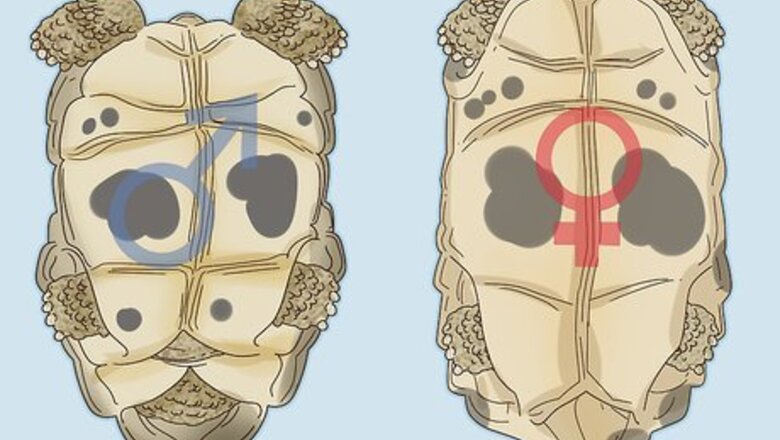
views
Examining the Turtle’s Shell

Look at your turtle’s shell. The turtle’s shell, or carapace, differs slightly between male and female. An adult female turtle has a slightly longer shell than an adult male has. As a means of sexing the turtle, this method is limited because you need to make sure that the turtle is fully grown. You may assume that a turtle is male due to a smaller size when it actually has more growing to do. There can be an overlap in size between a large male and a small female, so it’s not possible to predict the gender based on size alone.
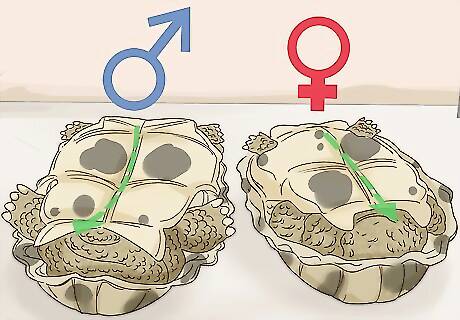
Examine the turtle’s plastron. The underside of the shell, which covers the turtle equivalent of a belly, is called the plastron. To check the plastron, pick the turtle up with care. They do not like to be handled and may try to bite, so grasp the turtle from the tail end so it can't reach around and snap at you. Gently turn the turtle over so you can see the underside. In male turtles, the plastron is slightly concave (curving inwards), whereas a female's is flat. A concave plastron allows for a male turtle to fit over a female’s shell during mating without rolling off. The female’s flatter plastron gives her more room internally in which to grow eggs.
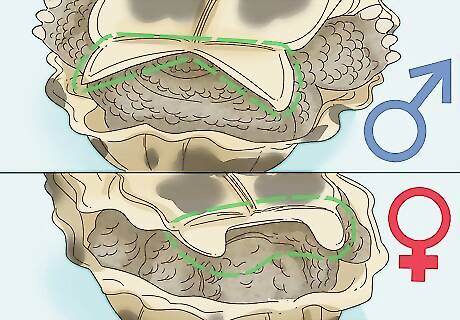
Check the turtle for a tail notch. Male turtles often have a small 'V,' or notch, at the rear end of the carapace. This is to accommodate the tail when the turtles mate. Otherwise the tail might be crushed against the underside of his shell.

Look for species-specific clues. Some species of turtles have gender-specific external features. Some species that may reveal gender through coloring are: The American box turtle: 90 percent of the time, male box turtles have red or orange irises while the female has brown or yellow ones. Also, the female has a tendency to have a higher-domed, more rounded shell, whereas the male has a lower shell with more of an oval or oblong appearance. Sun turtle: If the turtle's underbelly has blue coloring, it's a male. If the underbelly does not have blue coloring, it's a female.
Checking for Details
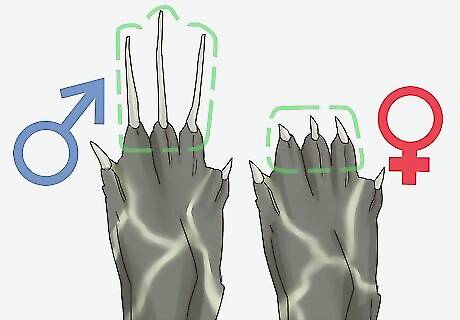
Examine the turtle’s front claws. Male turtles use their front claws during mating rituals with female turtles. They also use their front claws to fight and to claim and defend their territory. Therefore, the claws on the males' front legs tend to be longer than the claws of female turtles. Again, this is more obvious when you have two turtles of different sexes to compare with each other. The Red-eared Slider species particularly shows a pronounced difference between the male and female front claws.
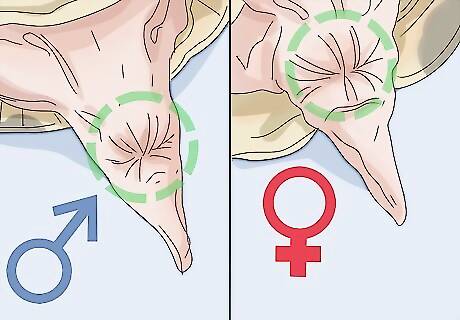
Look at the turtle’s cloaca. Both male and females have an opening or vent located on the underside on the tail. This is called the cloaca, and it is located slightly differently depending on the gender. The female's cloaca is rounder and more star-shaped than the male's. It is found much closer to her body, at the base of her tail where it joins her body, almost disappearing into the shell. The male's cloaca is longer and more slit-like. It is located in the last third of the tail, towards the tip.
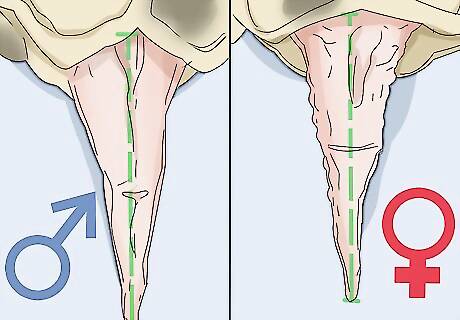
Determine the turtle’s tail size. The male's genitalia are located within the tail, and to accommodate them, the tail is longer and thicker than a female’s. The female's tail is shorter and thinner. Be aware that there is an overlap in normal sizes between male and female, so this can give you a hint, but it is not a foolproof way of sexing a turtle.
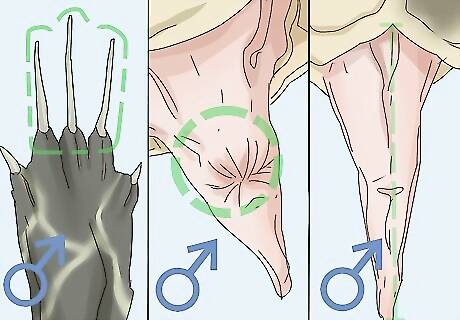
Combine multiple signs to reach a conclusion. The best approach to sexing a turtle is using a combination of the suggested steps to come up with the most likely gender for the turtle. Bear in mind that some methods are less reliable than others in determining the gender of your turtle. If all the signs point in one direction, then it's more likely than not that you've determined the gender accurately. However, if the signs are mixed, you may wish to take your turtle to a vet to be certain. If you're not sure what conclusion to draw, wait until the turtle is older and try again. It is extremely difficult to sex a baby turtle. Be aware that you might have to wait years until your turtle is fully grown and you can determine the gender effectively.

















Comments
0 comment